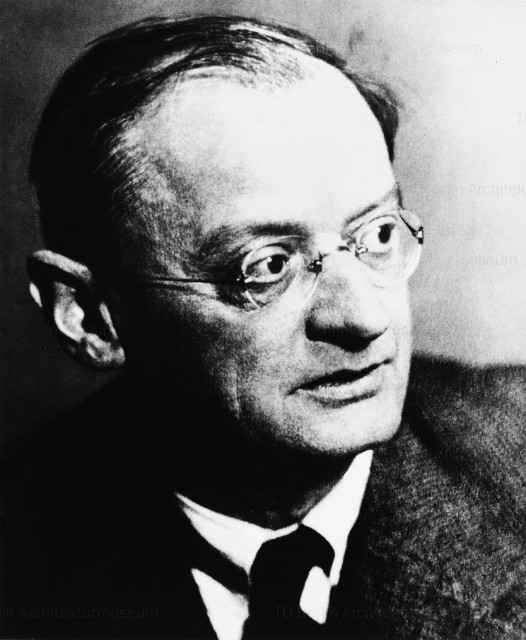Bruno Taut

Bruno Julius Florian Taut (°Königsberg, 4 mei 1880 – †Istanbul, 24 december 1938) was a prolific German architect, urban planner and author.
After secondary school, he studied at the Baugewerkschule. In the following years, Taut worked in the offices of various architects in Hamburg and Wiesbaden. In 1903 he was employed by Bruno Möhring in Berlin, where he acquainted himself with Jugendstil and new building methods combining steel with masonry. From 1904 to 1908, Taut worked in Stuttgart for Theodor Fischer and studied urban planning. He received his first commission through Fischer in 1906, which involved renovation of the village church in Unterriexingen.
In 1908, he returned to Berlin to study art history and construction at the Technical University in Charlottenburg. A year later, he established the architecture firm Taut & Hoffmann with Franz Hoffmann. Taut’s first large projects came in 1913. He became a committed follower of the Garden City movement, evidenced by his design for the Falkenberg Estate.
Taut adopted the futuristic ideals and techniques of the avante-garde as seen in the prismatic dome of the Glass Pavilion, which he built for the association of the German glass industry for the 1914 Werkbund Exhibition in Cologne. His aim was to make a whole building out of glass instead of merely using glass as a surface or decorative material.[citation needed] He created glass-treaded metal staircases, a waterfall with underlighting, and colored walls of mosaic glass. His sketches for the publication “Alpine Architecture” (1917) are the work of an unabashed utopian visionary, and he is classified as a Modernist and, in particular, as an Expressionist. Much of Taut’s literary work in German remains untranslated into English.





